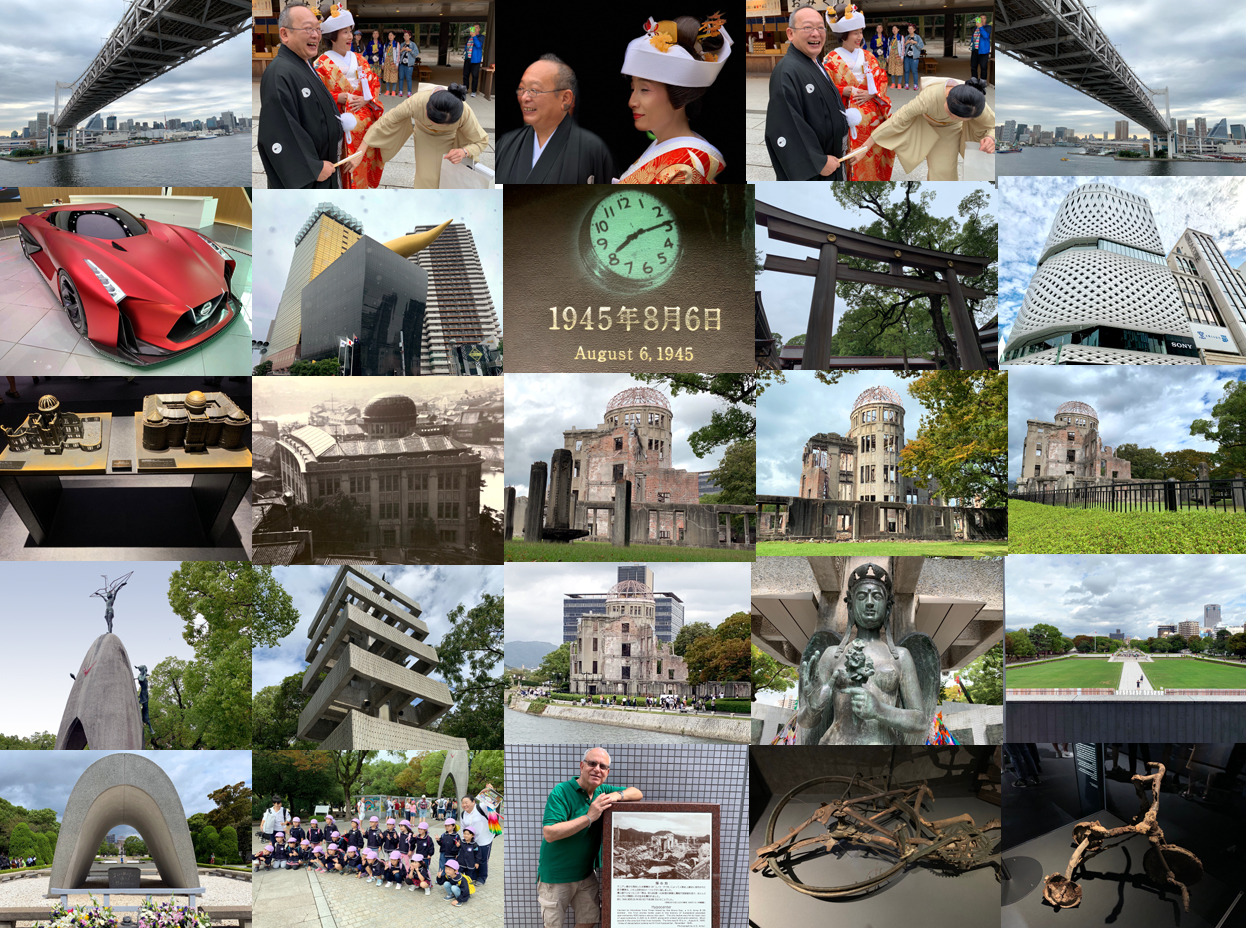Tokyo and Hiroshima

Tokyo’s Meiji Jingu is a Shinto shrine, dedicated Japan’s 122nd Emperor Meiji (1852-1912) and his consort, Empress Shoken. Shinto is called Japan’s ancient original religion, and is deeply rooted in the way of Japanese life. Shinto has no founder, no holy book, or religious conversion. Shinto values harmony with nature and virtues such as “Magokoro (sincere heart).” In Shinto, divinity is found in Kami, (divine spirit).
“No one else should ever suffer as we have.” This heartrending message of “Hibakusha” forged in a cauldron of suffering and sorrow, transcends hatred and rejection. Its spirit is generosity and love for humanity; its focus is the future of humankind.”
“LET ALL THE SOULS HERE REST IN PEACE FOR WE SHALL NOT REPEAT THE EVIL.”
These words express the spirit of Hiroshima - pursuing harmony and prosperity for all, and yearning for genuine lasting world peace.
This monument embodies the hope that Hiroshima, devastated on August 6, 1945 by the world’s first atomic bombing will stand forever as a city of peace.
The Children’s Peace Monument (March 5, 1958)
Hiroshima Prefectural Commercial Exhibition Hall (scale 1/100)
The building now known as the A-bomb Dome was designed by Czech architect Jan Letzel. Completed in April 1915, the Hiroshima Prefectural Commercial Exhibition Hall soon became a beloved Hiroshima landmark with a distinctive green dome.
While its business function included commercial research and consulting services and the display and sale of prefectural products, the hall was also used for exhibitions, fairs, and cultural events.
Through the years, it took on new functions and was renamed the Hiroshima Prefectural Products Exhibition Hall, then the Hiroshima Prefectural Industrial Promotion Hall. As the war intensified, however, the hall was taken over by the Chugoku-Shikoku Public Works Office of the Interior Ministry, the Hiroshima district Lumber Control Corporation, and other government agencies.
At 8:15a.m., August 6, 1945, an American B-29 bomber carried out the world’s first atomic bombing. The bomb exploded approximately 600 meters above and 160 meters southeast of the building, instantly killing everyone in it.
Because the blast struck from almost directly above, some of the center walls remained standing, leaving enough of the building and iron frame to be recognizable as a dome. After the war, these dramatic remains came to be known as the A-bomb Dome.
For many years, public opinion about the dome remained divided. Some felt it should be preserved as a memorial to the bombing, while others thought it should be destroyed as a dangerously dilapidated structure evoking painful memories.
As the city was rebuilt and other A-bomb buildings vanished, the voices calling for preservation gathered strength. In 1966 the Hiroshima City Council passed a resolution to preserve the A-bomb Dome which let to a public fundraising campaign to finance the construction work. Donations poured in with the wishes for peace from around Japan and overseas, making the first preservation project possible in 1967.
Several preservation projects have since been carried out to ensure that the dome will always look as it did immediately after the bombing.
In December 1996, the A-bomb Dome was registered on the World Heritage List as a historical witness conveying the horror of the first use of a nuclear weapon and as a world peace monument appealing continually for lasting peace and the abolition of such weapons.
To help protect the dome, the national government designated the area around it as a historic site under the Cultural Properties Protection Act with a larger area in and around Peace Memorial Park set aside as a buffer zone.
The Hypocenter
Carried to Hiroshima from Tinian Island by the “Enola Gay,” a US Army B-29 bomber, the first atomic bomb used in the history of mankind, exploded approximately 600 meters above this spot. The city below was hit by heat rays of approximately 3000 to 4000° centigrade along with a blast wind and radiation. Most people in the area lost their lives instantly. The time was 8:15 AM, August 6, 1945.